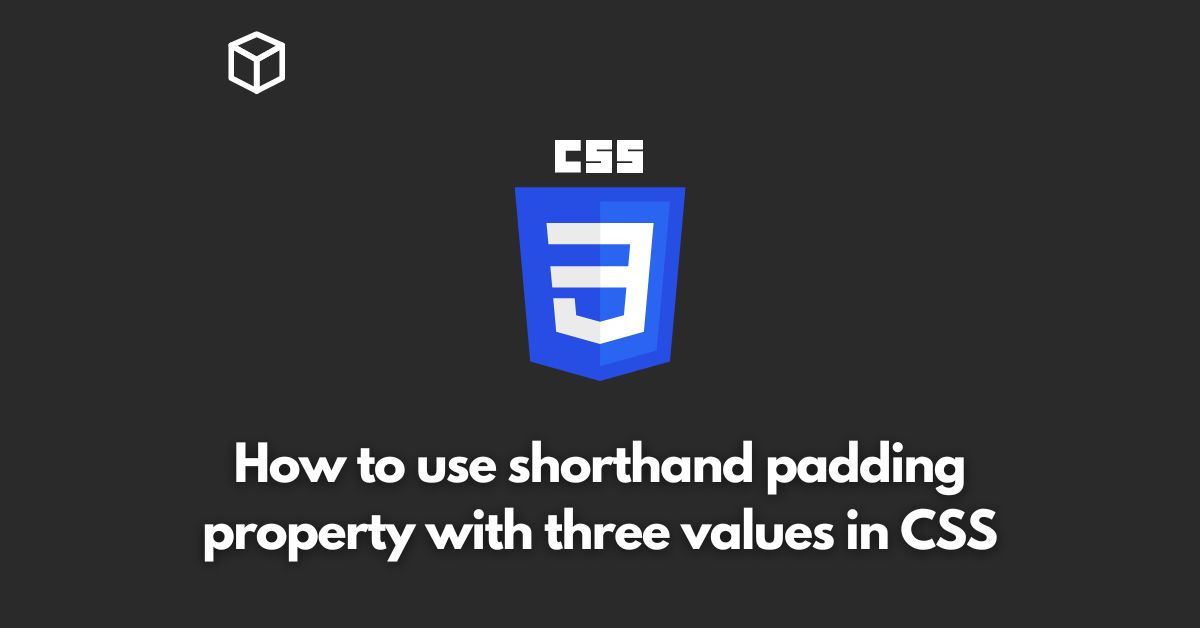Padding is a CSS property that adds space between an element’s content and its border.
It’s a shorthand property, which means that it can be used to set the padding for all four sides of an element at once.
But did you know that you can also use shorthand padding with three values?
In this CSS tutorial, we’ll take a look at how to use shorthand padding with three values and how it can be useful in your CSS.
The Basics of Padding
Before diving into shorthand padding with three values, let’s first take a look at the basics of padding.
The padding property can be used to add space between an element’s content and its border.
The basic syntax for padding is as follows:
padding: value;
The value can be a length, percentage, or one of the keyword values inherit or initial.
For example, the following code will add 10 pixels of padding to all four sides of the element:
padding: 10px;
You can also use different values for the top, right, bottom, and left sides of an element using the longhand properties: padding-top, padding-right, padding-bottom, and padding-left.
Shorthand Padding with Three Values
Shorthand padding with three values is a way to set the padding for three sides of an element at once.
The basic syntax is as follows:
padding: top right-and-left bottom;
For example, the following code will add 10 pixels of padding to the top of the element, 20 pixels of padding to the right and left sides of the element, and 30 pixels of padding to the bottom of the element:
padding: 10px 20px 30px;
You can also use percentage values or keyword values instead of length values.
Use Cases for Shorthand Padding with Three Values
Shorthand padding with three values can be useful in a number of different situations.
For example, you might use it to add space between the content of an element and its border, while keeping the right and left sides of the element aligned with the content of the element.
Another use case is when you want to add space to the top and bottom of an element, but not to the right and left sides.
container{
padding: 10px 0;
}Here in this example, we added 10px padding to the top and bottom of the element with the class container, but no padding to the right and left sides.
In conclusion, shorthand padding with three values is a useful tool for adding space between an element’s content and its border in a more efficient way.
It’s a great way to set the padding for three sides of an element at once and can be used in a variety of different situations.
Always remember, when using shorthand padding with three values, the order of the values is important.
It should be padding: top right-and-left bottom;.
Browser Support for Shorthand Padding with Three Values
It’s important to note that shorthand padding with three values is supported by all modern browsers, including Internet Explorer, Edge, Chrome, Firefox, Safari, and Opera.
However, if you need to support older browsers, you may need to use the longhand properties instead.
Conclusion
In this post, we’ve taken a look at how to use shorthand padding with three values in CSS.
By using shorthand padding with three values, you can add space between an element’s content and its border in a more efficient and concise way.
This is particularly useful when you need to add space to the top and bottom of an element, but not to the right and left sides.
As a reminder, always be mindful of browser support when using shorthand padding with three values, and if you need to support older browsers, it might be necessary to use the longhand properties instead.
In the end, I hope you found this post helpful and informative. If you have any questions or comments, feel free to leave them below.
Happy coding!




